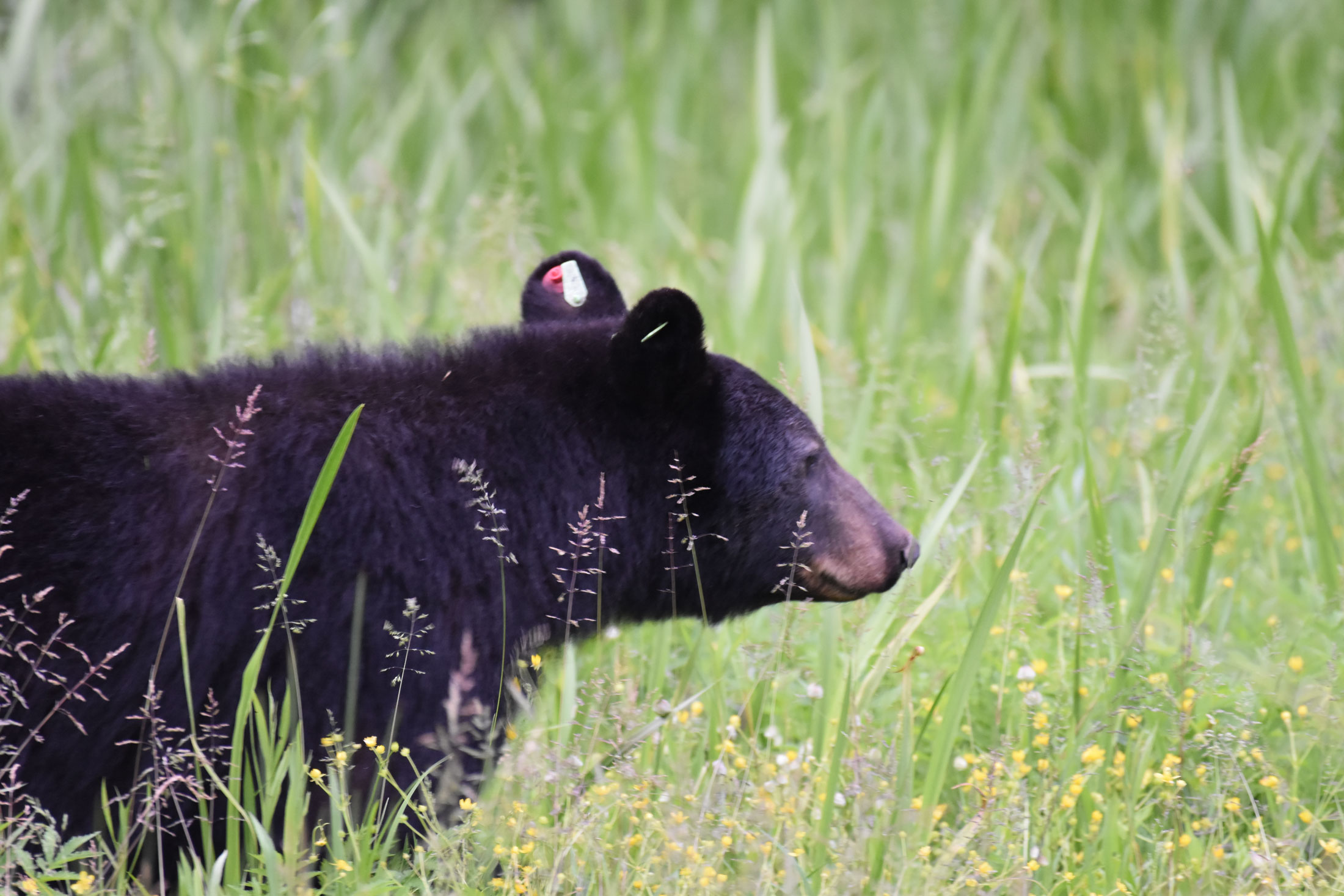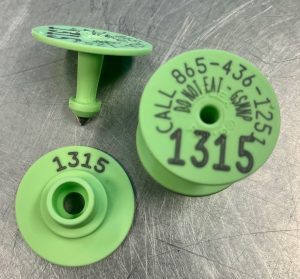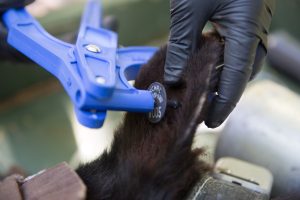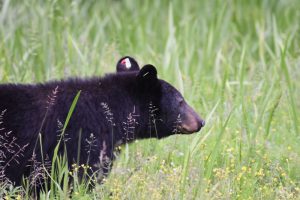
Spotting a black bear in the wild is a coveted experience for many of the millions who visit Great Smoky Mountains National Park each year. But some visitors are surprised to see these wild creatures sporting pieces of human-made “jewelry”—ear tags that come in a variety of colors.

“The biggest misconception is that, when people see an ear-tagged bear, they correlate that with how many times it’s been captured and how many ‘strikes’ it has,” said Ryan Williamson, Smokies wildlife biologist. “This is wrong. There is no ‘three strikes you’re out’ policy in the park.”
An estimated 1,900 bears roam the Smokies, and roughly 14,500 live in the four-state mountain region where the park nestles. For reasons ranging from research data collection to addressing conflicts with humans, wildlife professionals sometimes have to handle individual bears. This requires tranquilizing them. While the bear is asleep, wildlife staff install an ear tag that includes an individual identification number; in the park, this number is also tattooed on the inside of the bear’s lip. Because bears are prone to losing their tags, wildlife agencies often place two tags when a bear is first captured.
Many bears are tagged following conflicts with humans. But some receive their ear tags through no fault of their own, said Colleen Olfenbuttel, game mammals and surveys supervisor for the North Carolina Wildlife Resources Commission. For example, a bear may be tagged when it’s anesthetized to remove an object, such as a jug stuck on its head. Other bears are tagged as cubs. In Western North Carolina, NCWRC rehabilitates about ten black bear cubs each year, marking them with the agency’s round black or white ear tags before release.
The “three strikes you’re out” question is not the only one wildlife biologists field when it comes to ear tags. People want to know how long they stay in (it depends on the bear), what the number means (it’s an individual ID number), and why the tags say, “Do not eat.”

“The ‘do not eat’ statement is required due to the bear possibly being in the human food chain,” Williamson explained. “Once captured, all bears that receive ear tags are anesthetized with one of several chemicals, all of which have differing meat withdrawal times.”
Different agencies use different drugs. If a hunter contacts the park after harvesting a tagged animal, capture records can be inspected to determine if the harvest was within the meat withdrawal period. Only then can the hunter know if the animal is safe to eat. Hunting is not allowed within the park, but due to their large home ranges, black bears tagged within the park could easily end up outside it at some point in their lives.
Analogous to a US citizen’s social security number, the ID numbers inscribed on the bears’ ear tags follow these individuals throughout their lives, providing valuable data for wildlife biologists. Wildlife professionals can look up the number in their database to discover if the bear they are handling has been previously captured, and then begin connecting the dots on the animal’s history. A recent capture by the Tennessee Wildlife Resources Agency is a prime example of this function.
One August 18, 2022, TWRA captured an adult male bear that had been eating garbage at night in downtown Gatlinburg. He was caught before his behavior escalated and relocated to the portion of the Cherokee National Forest that lies south of the Smokies. He was recaptured nearly a year later on the Tennessee–North Carolina border in Cocke County, Tennessee, as part of a research study, and then again as a non-target animal in the same place he started—downtown Gatlinburg. Despite this being his third capture, he was released on site.

“The ear tags indicated he was captured before, but his behavior and the reason he was captured were considered separately from his previous ear tags,” said Janelle Musser, black bear support biologist for TWRA. “Bears that are moved do not remain where they are released and often travel back to their original capture location.”
Accumulated stories like this one provide wildlife biologists with data on survivorship rates, common causes of death, and overall changes within the bear population.
In the Smokies, bears that have been captured five or more times may still be re-released. Often, their behavior prior to capture was not threatening to humans, but they’d shown signs of getting too comfortable around people—sometimes “they just need to be reminded that we are bad for them,” Williamson said. On the other hand, if a bear injures a person, it will likely be euthanized even if it has never been captured before.
“Every bear is managed based on behavior,” Williamson said.
For more information about keeping both bears and people safe in bear country, visit bearwise.org.
Subscribe to get the latest posts sent to your email.
The Great Smokies Welcome Center is located on U.S. 321 in Townsend, TN, 2 miles from the west entrance to Great Smoky Mountains National Park. Visitors can get information about things to see and do in and around the national park and shop from a wide selection of books, gifts, and other Smokies merchandise. Daily, weekly, and annual parking tags for the national park are also available.